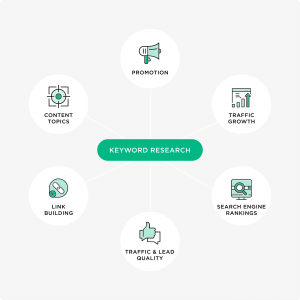Your brand can reach billions of people worldwide in just a few minutes. The reach and ability to target specific audiences via pay-per-click (PPC) marketing are tremendous.
Here’s a quick primer on pay-per-click marketing to ensure you’re on the right track.
What is a PPC Campaign?
A pay-per-click campaign is a form of digital advertising in which advertisers are charged a fee for each click on their ad. This model allows businesses to buy website traffic rather than relying on organic traffic.
Advertisers bid for ad placement in a search engine’s sponsored links when people search for keywords related to their business. For instance, if we bid on the keyword “pay per click PPC software,” our advertisement could appear towards the top of Google’s results page.
Assume your ads and landing pages are helpful and satisfying to your users. In that instance, Google will charge you less per click, resulting in better earnings for your company. So, to get started with AdWords PPC management, you must first learn how to roll in the hay correctly.
Get Free Strategy Document For Your Business
Pay-Per-Click (PPC) Advertising Cost
Digital advertising is not the same as placing an ad in a Newspaper, where you pay a fee and receive a full-cover page. On the other hand, PPC is a pay-per-click model where you only pay when you get results (someone clicking your ad).
On the other hand, offline advertising usually has a fixed charge regardless of the results. You have better control over the cost of each fully engaged consumer using PPC.
When a user searches for a specific keyword, such as “PPC Marketing,” Google searches its list of advertisers for that term and launches an auction between them. A Google algorithm selects ads based on each advertiser’s bid and quality score.
The critical point is that it isn’t simply how much you bid. The quality of your advertisement is also essential.
However, if your maximum bid is too low, your ads won’t be shown frequently enough to be profitable. The cost per click varies for different keywords, which should influence your bidding strategy.
Is Pay-Per-Click Advertising Right for My Business?
Like any other form of marketing, pay-per-click advertising has advantages and disadvantages. Ideally, your company will use PPC as part of a comprehensive digital marketing strategy, maximizing its strengths while minimizing its weaknesses.
Get Free Strategy Document For Your Business
Advantages of PPC marketing
Highly targeted: You can create ads and easily monitor their success and ROI.
Simple to monitor: You can create highly targeted ads and easily monitor their success and ROI.
Colossal Exposure: Paid advertisements are posted, with the potential to reach an almost infinite number of people.
This is why my digital marketing agency strives to create a strategy for your company.
Five Steps to Starting a PPC Marketing Campaign
It’s possible that you can launch your first PPC marketing campaign in as little as six steps. Remember that ad quality is crucial to the success of your campaign, so take your time and pay attention to every detail.
1. Understand Your PPC Budget.
To start, setting an initial budget that will enable you to test the waters is essential. After establishing an overall budget, you may use industry benchmarks as a rough guide to determine the cost of each conversion. Once you have set your overall budget, you should set daily and lifetime spending limits for your campaigns.
This is a crucial step in building a PPC campaign since your budget will significantly influence the performance of your advertising. Google Ads provides valuable tools to assist you with this, and it’s worthwhile to follow Google’s recommendations because its algorithms are geared to optimize your profit.
Think about whom you want to click on your ad and what actions you want them to take. When you understand this, you can optimize your entire campaign to attract individuals to perform those activities, lowering your expenses.
Get Free Strategy Document For Your Business
2. Figure Out What Type of Campaign to Run.
Another aspect to consider with PPC is the type of campaign you intend to conduct. There are several alternatives available here, each of which gives you freedom in how you approach your target audience:
- Search ads: Ads that appear at the top of search engines
- Social ads: Advertisements on social media platforms
- Remarketing ads: Advertisements that target users who have already visited
- Advertisements for e-commerce: Ads on Google Shopping aimed towards selling items
- Ads that appear in-stream: Played before a video load and is commonly seen on YouTube.
- Display advertisements: Dynamic advertisements appear on third-party websites, as shown in the figure below.
These choices provide you with the resources you want to target particular consumers. Find out where your target audience hangs out and what they respond to. This will vary according to the customer personas you’re attempting to reach.
You don’t have to stick to one ad style; many firms discover that a combination of ad forms works best for them. Dynamic advertisements appear on third-party websites, as shown in the figure below. All these choices provide you with the resources you want; keep an eye on your ROI for each ad kind, though, so you can adjust your approach as needed.
3. Research Your Keywords

Keyword research is one of the most important tools you’ll targeting your audience, and it can make or break your campaign.
While you understand how your consumers look for your products or services, you must limit it to the ones that lead to action.
Understanding user intent is an essential element. For instance, who is more likely to make a mistake? Who is more likely to make a purchase, someone looking to answer the question, “What is SEO?” or a person looking for the “best keyword research tool?”
Because of where that search falls in the buyer’s journey, it’s most likely the second. Because where people are in the buyer’s journey determines how likely they are to purchase, the keywords you use should reflect your target stage.
4. Bid On Your Chosen Keywords
Most platforms provide you with various bidding options based on your objectives. This is possible with Google Ads because it allows you to optimize for:
- Target CPA (cost per action)
- Target ROAS (return on ad spend)
- Maximize clicks
- Maximize conversions
- Maximize conversion value
- Target impression share
Although Google will bid on your behalf to optimize for your desired goal, you still have some control over your bid. For example, you can set a maximum bid to optimize for clicks or a target cost per action if you optimize for conversions.
It’s critical to remember that Google is here to help you get the most out of your advertising budget. The algorithms have been fine-tuned to accomplish this. Using Google’s recommendations is often a good idea, especially when starting fresh.
Get Free Strategy Document For Your Business
5. Create Keyword-focused Copy with Unique Landing Pages.
Getting people to click on your paid ads is just one part of your goal. What happens when people land on your page is critical, too.
Whatever your objectives are, you will need unique, engaging landing pages to achieve them.
Ensuring that your landing pages offer a seamless user experience and are closely related to the ad the user clicked on is essential. Users expect to find the information they need quickly and easily, and if your landing page is not relevant to their search keywords, they are likely to leave and return to Google. Relevant landing pages that provide an optimal user experience are essential to keeping visitors engaged and increasing conversion rates.
To summarize, your PPC landing pages must be optimized and A/B tested to ensure you get the most out of them.
Conclusion
Pay-per-click advertising is a fantastic way to reach a highly targeted audience quickly. Paid ads can be set up in seconds using platforms like Google, Bing, Facebook, Instagram, and others. Once approved, they could be seen by tens of thousands of people, depending on your budget.
While reaching your target audience is critical, what matters most is what you do once you have their attention. This is why you should manage your paid campaigns yourself or hire someone.
Read another fantastic article about “How to send effective outreach email.”
We help Businesses in developing a strong online presence for their Product or Services and doing well in the digital world in order to get your business on top ranking.Talk to PPC Marketing Expert






